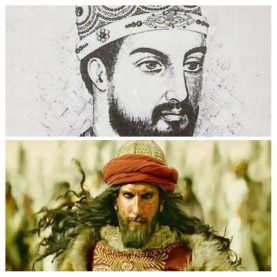
Alauddin Khilji from Padmavaat: This movie had a lot of controversy around it as the main character, Padmavaat, was Hindu but had some sort of relationship with the Muslim character, Alauddin Khilji. Perhaps the most obvious difference can be seen in the image of the character of Alauddin Khilji. In the movie he is portrayed as being a savage barbarian but that is very different from his painting.
Of course not all Muslims are good and some were even tyrants throughout history. To his credit, Alauddin Khilji was able to successfully fight off Mongol invaders who were attacking India, which was extremely difficult and very few people managed this. You can read more about that from here. While it might seem trivial, the Mongols were extremely powerful. With the case of Iraq for example, they massacred and burnt down the capital city of Baghdad so badly that some historic accounts record that the sea became black from the ink of books that were thrown into it. You can read more about that from here. Imagine that the Mongol armies had in fact not been defeated and managed to enter India. What would they have done to the country?
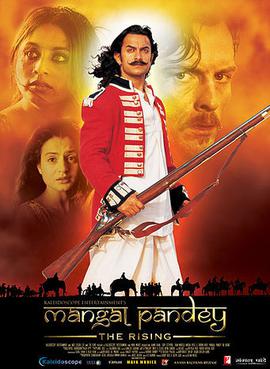
The Rising: This movie was based on a real Hindu freedom fighter during the time of the British, Mangal Pandey. It gives some insights into the rising of 1857 and fight for independence 90 years before India’s independence in 1947. What many people tend to forget however is that among the Indian freedom fighters were many Muslims. You can find out more from here and here. There is also a list of some Muslim freedom fighters here. The character of Bahadur Shah Zafar II who was the last Mughal Sultan is also mentioned by name in the movie.
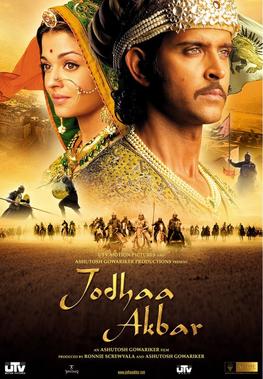
Akbar from Jodha Akbar: This is a very popular love story that has been made into many movies and television dramas, such as the movie “Jodha Akbar”, “Mughlai Azam” and many others. It is about a Mughal leader in India, Akbar, who had a Hindu wife, Jodha, who had a great influence on him and made him more religiously tolerant towards Hindus unlike his predecessors. The villain in some versions of the story is his Muslim wife, Ruqayya Begum, who was always making evil plans against Akbar’s son, Salim.
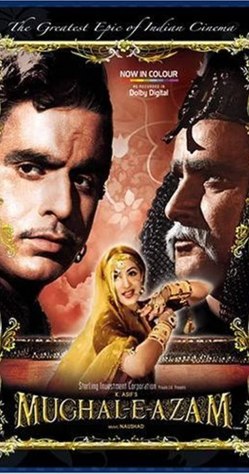
In many ways, I feel that this is perhaps the most distorted version of a historic account in a movie /drama that I have come across. Akbar did in fact have a Hindu wife, but she was never actually mentioned by name as she was famously known under the name “Mariam Al Zamani” and some think that her real name might have been “Heer Kunwari”. She was not known to have accepted Islam but had a Muslim burial and also sponsored Muslims to go for the Hajj /Pilgrimage to Makkah. You can find out more about her from here. As for Ruqayya Begum; far from being evil and planning against Akbar’s children, she was very much the opposite as he did in fact mention her by name and she helped to bring up and look after his children. You can find out more from here.
Regarding Akbar being religiously tolerant and that other Muslim leaders were not; there are many things to think about. For example: The British ruled India for about 200 years and people fought for independence for a very long time including Muslims who worked closely with Hindus and every year their success is celebrated on 15 August is India’s Independence Day. Muslims however ruled over various parts of India for almost 1,000 years in various forms but there was no mass uprising against them /annual independence celebrations for independence from Muslim rule. Why is that? Likewise, during the 18th and 19th Centuries, there was an industrial revolution in the UK while the British ruled India as much of their wealth came from there. However, just before them, the Muslims were ruling various parts of India but they did not take the wealth back to Central Asia to places such as Afghanistan where many of them came from (an easy to realise this is that most of the famous Muslim monuments such as the Taj Mahal, Jami Masjid and Qutb Minar are in India and not in Afghanistan or Iran). There was also another Muslim leader, Aurangzeb, who is often seen as not having any religious tolerance and destroying Hindu temples and yet he moved his capital to a city named after him, Aurangabad, and even today one of the main attractions are the very large and ancient Hindu temples at the Ajanta and Ellora Caves. You can find out more about Britain’s role in India from this video by an Indian politician, Dr Sashi Tharoor, at Oxford University in the UK from here.
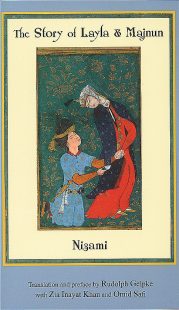
Layla and Majnoon: This is a very famous story especially in the Indian Subcontinent about two people who loved each other but could not be together. One of them went mad; “Majnoon” in Arabic. This is based on the true story of a man, Qays, who loved a woman, Layla, but she married someone else and he was extremely upset and wandered off into the desert. You can read about his story from here. Interestingly, there is a town in Al Aflaj on the East of Saudi Arabia, which has the name “Layla” and might have been where she came from. A very similar adaptation to this story is that of Romeo and Juliet by Shakespeare.
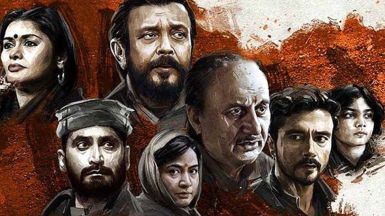
Kashmir Files: This is based on a 1990 exodus of Kashmiri Pundits, which leads to a college student, Krishna, to try and discover the truth.
Whenever anyone watches a movie or reads any work in general, it is important to double-check and verify it (please feel free to do your own background reading regarding anything on my website as well and do not simply blind follow me). Such works may be subject to historic errors, present biased information, information that has been deliberately changed and more. With that in mind, the region of Kashmir has experienced many clashes over the years. Without having a strong background in the context and making a detailed political analysis, it is difficult to draw any conclusions based on specific incidents. This movie also deviates from the truth.
One basic example is that Muslim militants in the movie use the slogan “Convert (to Islam), leave or die”. However, not every Muslim practises Islam the way that it should be followed (I have read a separate article about this, which you can read here). There is no compulsion in religion. It is mentioned in the Quran: “You have your way, and I have my Way” (Surah Al Kafiroon: 6). You can find out more about how the movie deviates from the truth here.
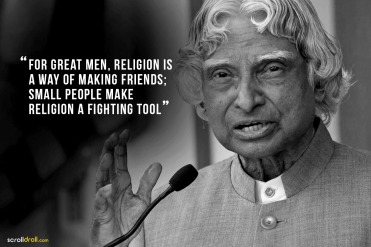
To simply generalise on specific incidents and presenting them as facts is not only misleading but also dangerous. Not everybody realises that movies are subject to historic errors. Some of the viewers may be unnecessarily angered (as the phrase “adding fuel to the fire”). They might then potentially use the exodus in the movie as an excuse to expel Muslims from India when this has been their home for several generations and they are proud Indians, actively contributing in areas of society. In fact, far from trying to expel all Hindus, many Muslims fought for independence alongside Hindus and risked their lives to protect the country. You can find out more from here. (The photo of the former Muslim President of India and Scientist, APJ Abdul Kalam).
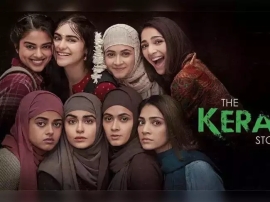
Kerela Story: This movie is about a woman narrating her story of how she converted to Islam and was lured into joining a criminal group in Iraq and Syria that falsely claimed to be Muslim (famously known as “ISIS”) and ended up in a prison in Afghanistan.
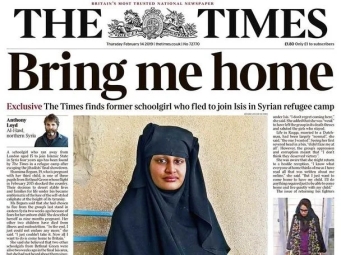
Similar to the above example with the “Kashmir Files”, this movie also presents fictional information as facts, which is misleading and dangerous. There have been a few cases of course that are similar such as the case of Shamima Begum in the UK (you can find out more from here). However, to suggest that Muslims actively lure people in large numbers into committing crimes is misleading and stereotypical. According to some estimates, ISIS had up to 30,000 members. Even if someone over estimates the number of these criminals to 40,000, divides it by the total number of Muslims (about 1.8 billion) and then multiply by 100, they would find that they only make up about 0.002% of the entire Muslim population. That is considerably less than 1%. Is that really enough reason to view all Muslims with suspicion? I have written a separate article about this, which you can read from here

I really liked your blog article. Will read on…
LikeLike
I have read so many articles on the topic of theblogger lovers except this paragraph isgenuinely a good article, keep it up.
LikeLike
Hi there, its good post on the topic of media print, we all know media is a greatsource of information.
LikeLike
I really like what you guys are usually up too. This kind of clever work and exposure! Keep up the fantastic works guys I’ve included you guys to my own blogroll.
LikeLike
I value the article post. Keep writing.
LikeLike
Enjoyed every bit of your post.Much thanks again. Really Great.
LikeLike
A motivating discussion is worth comment. I do believe that you ought to publish more about this issue, it might not be a taboo matter but generally people don’t discuss these issues. To the next! Cheers!!
LikeLike
Looking forward to reading more. Great blog article. Cool.
LikeLike
Really enjoyed this blog.Really thank you! Really Cool.
LikeLike
Nice.. I just stumbled upon your blog and wanted to saythat I have really enjoyed browsing your blog posts. 토토
LikeLike